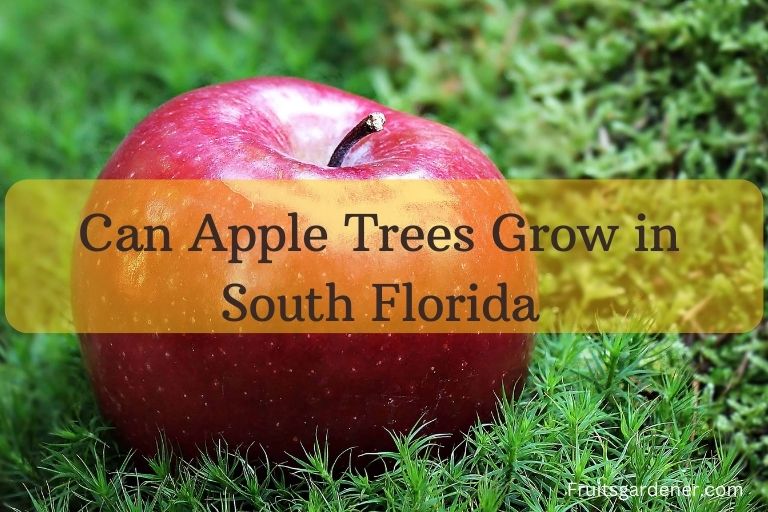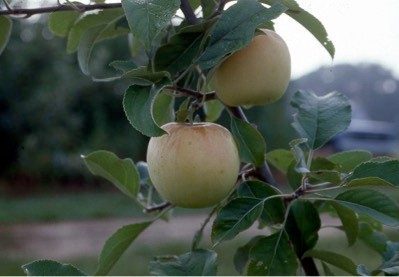This content is for informational purposes only and does not constitute financial, legal, or professional advice. Always consult a certified professional before making financial or investment decisions. As an affiliate, we may earn a commission from qualifying purchases made through links in this post at no extra cost to you.
Apple trees are a beloved staple of gardens and orchards worldwide, offering crisp, juicy fruit that is delicious both fresh and cooked. If you are a gardener or orchardist looking to increase your apple crop, you may be wondering how to make apple trees grow faster.
While apple trees do require time and patience to mature, there are several steps you can take to help them grow more quickly and efficiently. One key factor in promoting faster apple tree growth is proper soil preparation. Apple trees thrive in well-draining soil that is rich in organic matter and nutrients.
Before planting your apple trees, it is important to prepare the soil by adding compost or other organic matter, and ensuring that the pH level is between 6.0 and 7.0. This will provide your trees with the necessary nutrients and conditions to grow strong, healthy roots and branches.
Another important consideration is pruning. Regular pruning of your apple trees helps to promote faster growth by removing dead or diseased branches and encouraging the growth of new, healthy branches. Additionally, pruning helps to shape the tree and increase sunlight exposure to the fruit-bearing branches, leading to a larger and more abundant apple harvest.
Other factors that can help to promote faster apple tree growth include regular watering, fertilization, and pest control. By following these steps and providing your apple trees with the right care and attention, you can enjoy a bountiful harvest of delicious, juicy apples for years to come.

How to Make Apple Trees Grow Faster (5 Easy Steps)
To make apple trees grow faster, choose fast-growing varieties and the right size tree for your space. Plant the tree in a location that receives plenty of sunlight, and prepare the soil with compost or aged manure. Provide regular watering and fertilize with a balanced fertilizer.
Prune regularly to remove damaged or diseased branches, and thin the fruit to encourage faster growth and larger fruit. By following the below steps, you can help your apple tree grow faster and produce a bountiful harvest.
Step: 1- Choosing The Right Varieties

It is important to choose the right varieties of apples that grow faster. It can help you get a head start on your orchard and enjoy a bountiful harvest sooner. Here are some factors to consider when selecting apple varieties that are known for their fast growth:
Dwarfing Rootstocks:
Some apple varieties are naturally slower growing than others, but by grafting them onto dwarfing rootstocks, you can speed up their growth. Dwarfing rootstocks have been developed to limit the size of the apple tree, while also promoting faster growth and earlier fruiting. Popular dwarfing rootstocks include M.9, M.26, and G.16.
Early Ripening Varieties:
Apple varieties that ripen earlier in the season tend to have a faster growth rate, as they have less time to develop their fruit. Early ripening varieties include Lodi, Red Astrachan, and Early McIntosh.
Disease Resistance:
Choosing apple varieties that are resistant to common diseases such as apple scab and fire blight can help promote faster growth, as the trees are not held back by disease.
Climate Adaptability:
Apple varieties that are well-suited to your climate will be more likely to grow quickly and thrive in your orchard. For example, if you live in a cooler climate, varieties like Honeycrisp and Northern Spy are good options.
Step: 2 – Determine The Soil Quality For Apple Tree –

To determine the soil quality for apple trees, several factors should be considered. The first step is to conduct a soil test, which provides valuable information about the soil’s nutrient levels, pH, and composition. Soil testing kits are available at garden centers or through agricultural extension services.
The ideal soil pH for apple trees is typically between 6.0 and 7.0. Additionally, assessing the soil’s texture is important; apple trees prefer well-draining soil, so it should be loamy or sandy rather than heavy clay. Observing the soil’s moisture retention ability is also crucial.
It should retain adequate moisture for root uptake without becoming waterlogged. Checking for any signs of compaction, such as poor drainage or shallow root penetration, is essential. Ultimately, understanding the soil quality allows for appropriate amendments and adjustments to ensure optimal growing conditions for apple trees.
The quality of your soil can also impact the growth rate of your apple trees. Make sure your soil is well-draining and rich in nutrients to promote healthy, fast growth.
When choosing apple varieties that grow faster, it’s important to consider a combination of these factors. By selecting varieties that are well-suited to your climate and soil, and grafting them onto dwarfing rootstocks, you can give your apple trees a head start and enjoy a faster-growing, bountiful orchard.
Step 3: – Choosing The Right Size Of The Apple Tree

Choosing the right size of the apple tree is an important consideration when planning your orchard. The size of your apple tree will impact how much space it needs to grow, how much fruit it can produce, and how easy it is to maintain. Here are some things to keep in mind when choosing the right size of apple tree for your needs:
Standard Trees:
Standard apple trees can grow up to 30 feet tall and require plenty of space to spread out. While they can produce a large amount of fruit, they can also be more difficult to maintain and harvest, and may not be practical for smaller orchards or backyard gardens.
Semi-Dwarf Trees:
Semi-dwarf apple trees are a good compromise between standard and dwarf trees. They typically grow to be around 15 feet tall, making them easier to maintain and harvest while still producing a substantial amount of fruit.
Dwarf Trees:
Dwarf apple trees are the smallest option, typically growing to be around 6-10 feet tall. While they produce less fruit than standard trees, they are ideal for small orchards or backyard gardens, as they require less space and are easier to maintain.
Rootstock Selection:
In addition to choosing the right size of tree, selecting the right rootstock can also impact the growth rate and size of your apple trees. Dwarfing rootstocks such as M.27 or M.9 can help keep your tree small and compact, while larger rootstocks like MM.111 can encourage faster growth and a larger size.
Consider Your Needs:
When choosing the size of your apple tree, consider your personal needs and preferences. How much fruit do you want to produce? How much space do you have available in your orchard or backyard? By taking these factors into account, you can select the size of apple tree that is right for you.
In summary, choosing the right size of apple tree involves careful consideration of your needs and preferences, as well as factors such as rootstock selection and available space. By selecting the right size of the tree, you can enjoy a bountiful harvest while also making maintenance and harvesting easier and more efficient.
Step: 4 – Planting Apple Tree In Right Methods
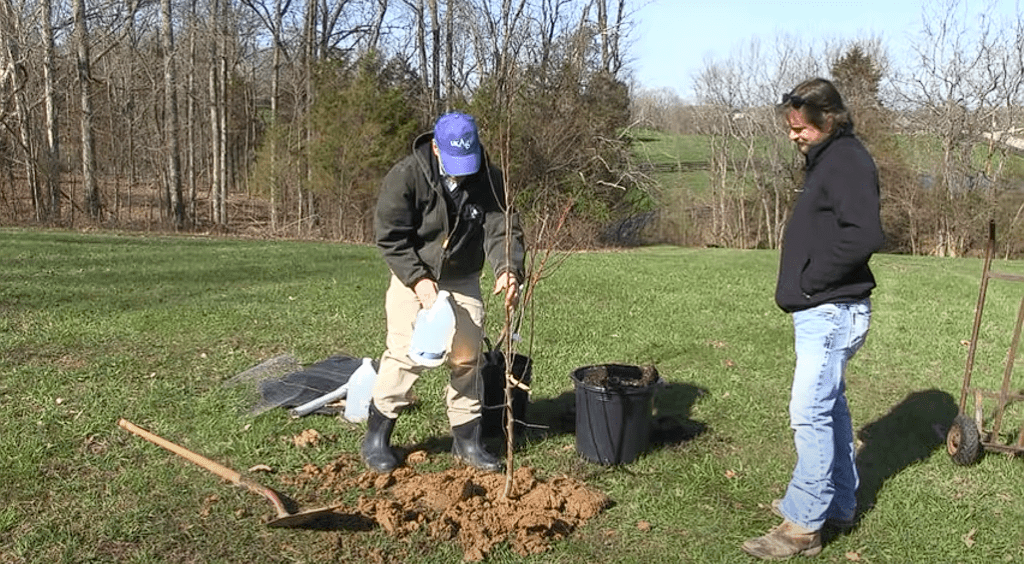
Planting an apple tree is an investment in the future, and it’s important to take the time to do it right. Proper planting techniques will help your tree establish strong roots, promote healthy growth, and increase the likelihood of a bountiful harvest. Here are some steps to follow when planting an apple tree:
Choose a Site:
Choose a site that is well-drained and receives plenty of sunlight. Apple trees require at least six hours of direct sunlight per day to grow and produce fruit. Make sure the site is also protected from strong winds and has good air circulation.
Prepare the Soil:
Prepare the soil by removing any weeds or grass and digging a hole that is at least twice the size of the tree’s root ball. Add compost or aged manure to the soil to improve its nutrient content and drainage.
Related Topic – 5 Best Soil for Apple Trees And Their Preparation
Plant the Tree:
Carefully remove the tree from its container and gently loosen the roots. Place the tree in the hole, making sure the graft union (where the scion is attached to the rootstock) is above the soil line. Backfill the hole with soil, tamping it down gently to remove any air pockets.
Water the Tree:
After planting, water the tree thoroughly to help settle the soil around the roots. Provide regular watering during the first growing season, especially during periods of drought or high heat.
Mulch the Base:
Add a layer of organic mulch, such as wood chips or straw, around the base of the tree. This will help retain moisture in the soil, suppress weed growth, and regulate soil temperature.
Prune:
Prune the tree after planting to remove any damaged or broken branches, and to shape the tree for optimal growth. Pruning also encourages the development of strong branches and a balanced canopy.
Related Topic – When to Prune Apple Trees and How to Prune a Young Apple Tree
By following these steps, you can give your apple tree the best possible start in life. With proper care and maintenance, your tree will establish strong roots, grow healthy and strong, and provide you with a bountiful harvest for years to come.
Step: 5 – Caring for An Apple Tree For Fast Growing –
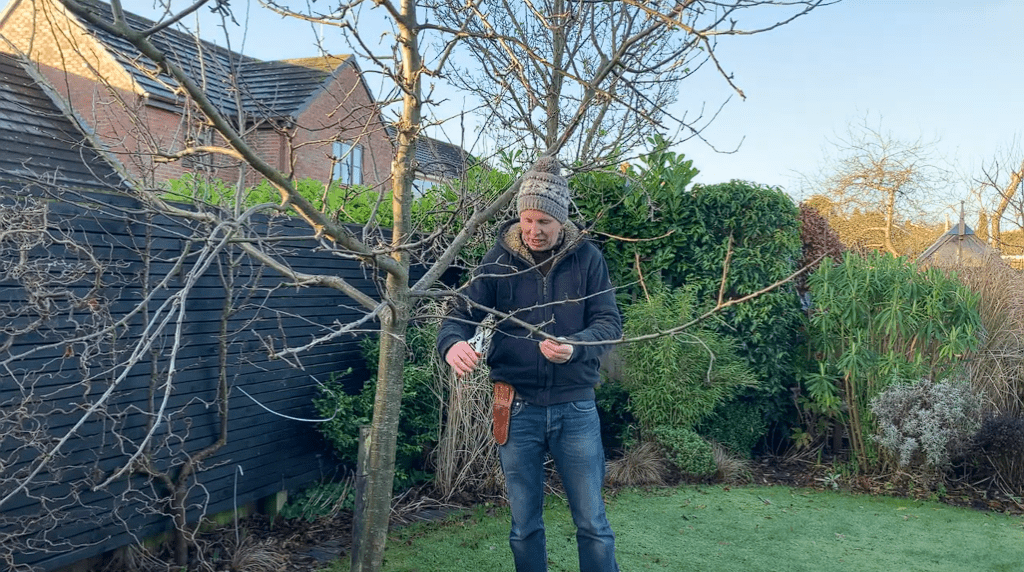
Caring for an apple tree involves providing it with the right nutrients, water, and sunlight to promote healthy growth and development. Here are some tips for caring for an apple tree to encourage fast growth:
Fertilize:
Apple trees need a balanced fertilizer to promote healthy growth. In the spring, apply a slow-release fertilizer to the soil around the base of the tree. Be sure to follow the manufacturer’s instructions and do not over-fertilize, as this can damage the tree.
Water:
Water your apple tree regularly, especially during periods of drought or high heat. Apple trees require about 1-2 inches of water per week, either from rainfall or irrigation. Be sure to water deeply, allowing the water to penetrate the soil to the tree’s roots.
Prune:
Regular pruning is essential to promote healthy growth and remove any damaged or diseased branches. Prune in the winter when the tree is dormant, and remove any branches that cross or rub against each other.
Pest Control:
Apple trees are susceptible to pests and diseases that can damage the tree and inhibit growth. Use organic pest control methods to prevent and control pests, and regularly inspect the tree for signs of disease.
Sunlight:
Apple trees require plenty of sunlight to grow and produce fruit. Make sure the tree is in a location that receives at least six hours of direct sunlight per day. If necessary, trim any nearby branches or foliage that may be shading the tree.
Thin the Fruit:
As the apple tree begins to produce fruit, thin the fruit to encourage faster growth and larger fruit. Leave only one or two apples per cluster, and space them about 6 inches apart.
By following these tips, you can help your apple tree grow faster and produce a bountiful harvest. Remember to provide it with the proper care and maintenance throughout the growing season to keep it healthy and strong.
What Varieties of Apples Grow Faster (Most Recommended Varieties)
When it comes to choosing apple varieties that grow faster, there are a few options to consider. Here are some apple varieties that are known for their relatively fast growth:
Honeycrisp:

This popular apple variety is known for its juicy, sweet-tart flavor and crisp texture. Honeycrisp apple trees are also known for their vigorous growth, with some trees reaching up to 20 feet in height in just a few years.
Liberty:
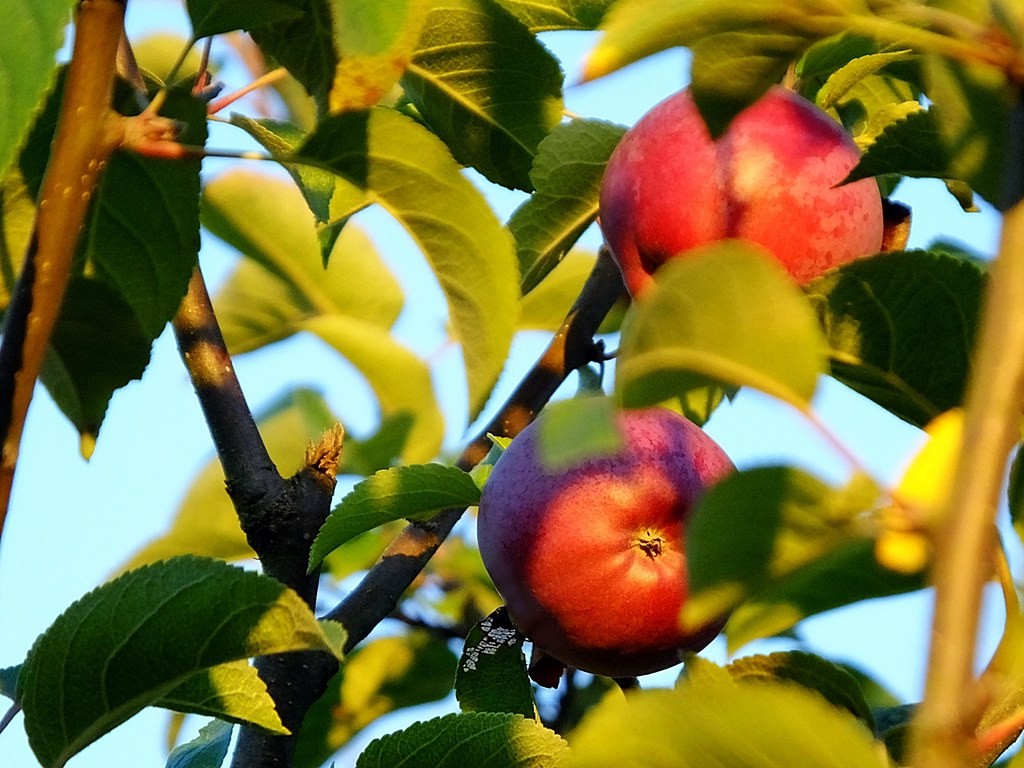
Liberty apple trees are resistant to many common apple tree diseases and pests, and are also known for their relatively fast growth. They typically reach a height of about 15-20 feet at maturity.
Red Delicious:

While Red Delicious apples may not be as popular as they once were, they are still a relatively fast-growing apple variety. These trees can reach a height of up to 20 feet in just a few years, and are known for their deep red color and sweet flavor.
Gala:

Gala apples are a popular choice for backyard orchards, as they are relatively easy to grow and produce fruit quickly. Gala apple trees typically reach a height of about 12-15 feet at maturity.
Granny Smith:

Granny Smith apples are known for their tart, crisp flavor and bright green color. These trees are also relatively fast-growing, reaching a height of about 20 feet in just a few years.
It’s worth noting that the growth rate of apple trees can vary depending on a number of factors, including soil quality, climate, and growing conditions. However, if you are looking for apple varieties that are known for their relatively fast growth, these are some options to consider.
Related Topic –
How to Treat Apple Tree Diseases – Identify and Solution.
5 Best Apples To Eat For Health Benefits
Factors to Consider When Choosing Apple Varieties
However, there are some factors to consider when choosing apple varieties that may affect their growth rate.
Climate And Soil Conditions
Another factor to consider is the climate and soil conditions in your area. Some apple varieties may be better suited to your specific climate and soil type, which can affect their growth rate. For example, some varieties may be more tolerant of heat or cold or may require specific soil conditions to grow well.
Ultimately, the best way to promote faster apple tree growth is to provide proper care and attention to your trees, regardless of the variety. This includes regular watering, fertilization, pruning, and pest control.
Rootstock :
Another factor to consider is the rootstock. Rootstock is the root system of the apple tree, onto which the desired apple variety is grafted. Different rootstocks have different characteristics, including growth rate, disease resistance, and tolerance to different soil conditions.
Some rootstocks are known for their ability to promote faster tree growth, such as the Malling-Merton 111 and Geneva 935 rootstocks. If you are purchasing apple trees from a nursery, you can ask about the rootstock used for the variety you are interested in.
Disease Resistance:
Some apple varieties are more resistant to common diseases such as apple scab, fire blight, and powdery mildew. Choose disease-resistant varieties to reduce the need for chemical treatments.
Pollination:
Apple trees require cross-pollination to produce fruit. Make sure to choose apple varieties that are compatible with each other to ensure proper pollination.
Harvest Time:
Different apple varieties ripen at different times throughout the season. Choose a mix of early, mid-season, and late-season varieties for a longer harvest period.
Health Benefits, Flavor, and Texture:
Consider the health benefits, flavor, and texture of the apples you prefer. Some varieties are sweet and juicy, while others are tart and crisp. Choose the varieties that suit your taste preferences.
Intended Use:
Consider how you plan to use the apples. Some varieties are better for eating fresh, while others are better for cooking or making cider.
By following these guidelines and choosing apple varieties that are well-suited to your local growing conditions, you can help ensure that your apple trees grow strong and healthy and produce a bountiful harvest of delicious fruit.
Tips For How to Make Apple Trees Grow Faster
To make apple trees grow faster, you can do a few things. Below are a few effective tips to make apple trees grow faster. I hope this will help you a lot.
- Choose a sunny spot to plant your tree
- Apple trees need at least six hours of sunlight each day to produce fruit
- Prepare the soil before planting by tilling it and adding organic matter such as compost or manure
- This will help the tree roots grow quickly and establish a strong foundation
- Plant your apple tree in the spring when the weather is warm and there is no risk of frost damage
- Water your tree regularly, especially during dry periods, to keep the soil moist but not waterlogged
- Mulching around the base of the tree will also help retain moisture in the soil
- Fertilize your apple tree every year with an all-purpose fertilizer or one specifically formulated for fruit trees
What Helps Apple Trees Grow Faster?
Apple trees are members of the rose family and are native to Asia, Europe, and North America. The apple tree is a deciduous tree, meaning it sheds its leaves annually. Apple trees can range in height from 20 feet to 30 feet, with a trunk diameter of 1 foot to 2 feet.
There are many different types of apples, including: Macintosh, Red Delicious, Golden Delicious, Granny Smith, and Rome Beauty. Apples need full sun exposure and well-drained soil to grow properly. They also need to be pruned regularly to encourage new growth.
Watering is also important for apple trees; they should be watered deeply once a week during the growing season (April-September). Fertilizing your apple tree every spring will help promote growth and fruit production.

How Long Does It Take for an Apple Tree to Grow to Full Height?
An apple tree will generally take between 5 and 8 years to grow to full height. However, this can vary somewhat depending on the specific type of apple tree, as well as the growing conditions. For example, if the tree is being grown in an especially sunny location, it may reach full height a bit sooner than if it were being grown in a more shady spot.
Additionally, some types of apple trees are naturally faster-growing than others. So, if you’re wondering how long it will take for your particular apple tree to reach full height, it’s best to ask a local nursery or gardening expert for advice.
Why is My Apple Tree Growing So Slowly?
One of the most common questions we get here at Apple Tree Farm is “Why is my apple tree growing so slowly?”. There can be a number of reasons for this, but let’s go over a few of the most common ones. First off, it’s important to understand that all trees grow at different rates.
Some species of trees can grow up to 2 feet per year, while others may only grow an inch or two. So, if you compare your apple tree’s growth rate to that of another type of tree, it may seem like it’s growing slowly when in reality it’s right on track. Another reason why your apple tree may be growing slowly is because it was recently transplanted.
It can take a few years for a transplanted tree to fully adjust to its new surroundings and really start putting on some growth. So, if you just moved your apple tree to a new location, give it some time before you start worrying about its slow growth rate. Finally, environmental factors can also impact how quickly an apple tree grows.
If the soil is poor or there isn’t enough water or sunlight reaching the tree, its growth will inevitably suffer. Make sure you are giving your apple tree the best possible conditions and care and it should start picking up the pace eventually.
Fertilizer to Make Trees Grow Fast
When it comes to trees, there are a lot of different factors that can affect how fast they grow. One important factor is the type of fertilizer you use. If you want your trees to grow as quickly as possible, then you need to use a fertilizer that is high in nitrogen.
Nitrogen is an essential nutrient for plants, and it helps them to produce more chlorophyll, which is what gives leaves their green color. It also helps plants to create more proteins, which are needed for cell growth. There are a few different ways to apply nitrogen fertilizer to your trees.
You can either broadcast it over the entire area where the tree is growing, or you can apply it directly to the roots. If you choose to broadcast the fertilizer, be sure to do so early in the morning so that the leaves have time to absorb it before the sun gets too hot.
If you apply it directly to the roots, be careful not to damage them with the fertilizer because this could stunt the tree’s growth. The best time of year to fertilize your trees is in late spring or early summer when they are actively growing.
Related Topic –
- How to Fertilize Apple Trees – 5 Step By Step Easy Guidelines
- When to Fertilize Apple Trees – 3 Useful Tips For Fertilizing Apple Tree
- Top 6 Best Fertilizers for Apple Trees
How to Grow an Apple Tree from a Seed
Growing an apple tree from a seed is not as difficult as it may seem. With a little bit of patience and care, you can grow your own apple tree from a seed in just a few short years. Here are the steps you need to take to grow an apple tree from a seed:
1. Start with fresh seeds: If you are using seeds that have been stored for any length of time, they may not be viable. It is best to start with fresh seeds that have been harvested from a ripe apple.
2. Soak the seeds in warm water for 24 hours before planting: This will help to break down the hard outer shell of the seed and encourage germination.
3. Use Well Draining Potting Mix: Fill a pot with well-draining potting mix and plant the seeds about 1 inch deep. Water lightly and keep the soil moist but not soggy until the seedlings emerge.
4. Thin The Seedlings: Once the seedlings have emerged, thin them out so that only the strongest one remains in each pot. Transplant into larger pots as needed until they are ready to be planted outdoors in late spring or early summer when they are at least 2 feet tall and have developed several strong branches.
Frequently Asked Questions
Q: What is the best variety of apple to plant for fast growth?
A: Some varieties of apple that are known to grow faster include Honeycrisp, Liberty, and Zestar.
Q: How deep should I plant my apple tree to encourage faster growth?
A: Plant your apple tree so that the graft union is 2 to 3 inches above the soil line. This will allow the roots to establish faster and promote quicker growth.
Q: Can I use chemical fertilizers to make my apple tree grow faster?
A: While chemical fertilizers can provide a quick boost of nutrients, it’s best to use organic fertilizers like compost or aged manure. These fertilizers provide slow-release nutrients that promote long-term growth.
Q: How often should I water my apple tree?
A: Water your apple tree deeply once a week, or more frequently during periods of drought or high heat. Make sure the soil is moist but not waterlogged.
Q: How much sunlight does my apple tree need?
A: Apple trees need at least six hours of direct sunlight per day to grow and produce fruit.
Q: When should I prune my apple tree?
A: Prune your apple tree in the late winter or early spring while it is still dormant. This will help promote healthy growth and remove any damaged or diseased branches.
Q: How do I control pests and diseases that can damage my apple tree?
A: Use organic pest control methods, such as spraying with neem oil or introducing beneficial insects like ladybugs. Regularly inspect the tree for signs of disease and remove any infected branches.
Q: How can I encourage my apple tree to produce more fruit?
A: Thin the fruit to encourage faster growth and larger fruit. Leave only one or two apples per cluster, and space them about 6 inches apart.
Q: Can I grow an apple tree in a container?
A: Yes, apple trees can be grown in containers. Choose a dwarf or semi-dwarf variety, and use a large container with good drainage. Make sure to provide regular watering and fertilization.
Q: Are there any natural remedies for promoting fast growth in apple trees?
A: Yes, you can use natural fertilizers like compost or aged manure, and add organic matter to the soil to promote healthy growth. Additionally, making sure the tree has access to sufficient sunlight and water can also promote faster growth.
Conclusion
This article provides some tips on how to make apple trees grow faster. By following the advice in this post, you can help your apple trees reach their full potential and produce a bountiful harvest each year.

